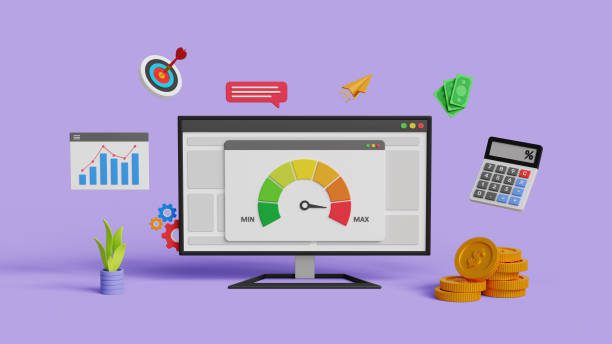
The Crucial Impact of Website Speed on SEO: Causes and Solutions
In today’s digital age, where attention spans are fleeting and user expectations are sky-high, the speed at which a website loads is more than just a technical concern—it is a decisive factor in search engine optimisation (SEO). For businesses, bloggers, and online platforms alike, a sluggish website could mean the difference between a top-ranking presence and digital obscurity.
This article explores the critical relationship between website speed and SEO, unpacks the reasons behind slow loading times, and offers practical solutions to improve performance and visibility.
Why Website Speed Matters for SEO
1. User Experience and Behavioural Signals
Google’s core objective is to deliver the most relevant and useful results to its users. A fast-loading website enhances the user experience by reducing frustration and allowing users to access information swiftly. Conversely, a slow website can lead to high bounce rates, low engagement, and reduced dwell time—all of which are behavioural signals that search engines monitor and factor into their ranking algorithms.
- Bounce Rate: Users are more likely to abandon a website if it takes more than three seconds to load.
- Pages Per Session: Faster websites encourage deeper browsing.
- Conversion Rates: E-commerce sites with quicker load times see higher conversion rates.
2. Google’s Algorithm and Core Web Vitals
In 2021, Google introduced Core Web Vitals as part of its page experience update. These metrics directly assess aspects of user experience, with website speed playing a pivotal role.
The key Core Web Vitals are:
- Largest Contentful Paint (LCP): Measures loading performance; ideally under 2.5 seconds.
- First Input Delay (FID): Measures interactivity; should be less than 100 milliseconds.
- Cumulative Layout Shift (CLS): Evaluates visual stability; should be less than 0.1.
Websites that fail to meet these benchmarks risk ranking lower in Google’s search results.
3. Mobile-First Indexing
With the majority of web traffic now coming from mobile devices, Google has adopted a mobile-first indexing approach. Mobile users are typically on slower connections, making page speed even more critical. A site that performs poorly on mobile may suffer penalties in both mobile and desktop search rankings.
Common Causes of Slow Website Speed
Understanding why a website is underperforming is the first step in resolving the issue. Below are the primary culprits behind sluggish website performance:
1. Large Image Files
High-resolution images can significantly increase page load times, particularly when they are not optimised for the web.
2. Excessive HTTP Requests
Every element on a webpage—images, scripts, stylesheets—requires an HTTP request. A high number of requests can severely slow down a page.
3. Poor Hosting Services
Shared hosting or budget web hosting solutions often lack the resources necessary to handle traffic efficiently, leading to slow server response times.
4. Unoptimised Code
Bulky HTML, CSS, and JavaScript files, especially when not minified or compressed, can hamper load speeds. Render-blocking JavaScript can be especially detrimental.
5. Too Many Plugins
On content management systems like WordPress, having too many or poorly coded plugins can introduce inefficiencies and conflicts that slow down performance.
6. Lack of Caching
Without caching mechanisms in place, a website has to load all elements afresh each time a user visits a page, leading to increased server load and slower speeds.
7. No Content Delivery Network (CDN)
Users located far from your web server may experience longer loading times due to latency, especially if your site serves a global audience.
Solutions for Improving Website Speed
Fortunately, there are numerous effective strategies for addressing the above issues and enhancing your website’s speed, thereby improving your SEO outcomes.
1. Optimise Images
- Compress images using tools like TinyPNG or ImageOptim.
- Use modern formats like WebP.
- Implement responsive images using the srcset attribute.
2. Minimise HTTP Requests
- Simplify the design by reducing the number of elements per page.
- Combine CSS and JavaScript files where possible.
- Use CSS sprites for small images.
3. Upgrade Hosting
- Invest in a reliable hosting provider with good performance metrics.
- Consider VPS or dedicated servers for high-traffic sites.
- Use managed hosting services optimised for your platform (e.g., WordPress).
4. Streamline Code
- Minify HTML, CSS, and JavaScript files.
- Remove unnecessary code and plugins.
- Defer loading of non-critical JavaScript (lazy loading).
5. Limit Plugin Usage
- Only install essential plugins.
- Choose well-maintained and performance-optimised plugins.
- Regularly audit and remove unused or outdated plugins.
6. Enable Browser Caching
- Configure .htaccess or use plugins to set cache headers.
- Cache static resources like images, scripts, and stylesheets.
7. Utilise a CDN
- Use a CDN like Cloudflare, Amazon CloudFront, or Akamai.
- CDNs distribute your content across multiple locations, serving users from the nearest node.
8. Monitor and Test Performance
Regularly assess your site speed using tools like:
- Google PageSpeed Insights
- GTmetrix
- Pingdom Tools
- Lighthouse (Chrome DevTools)
These tools provide detailed diagnostics and actionable recommendations.
The Long-Term SEO Benefits of a Fast Website
A consistently fast website does more than just please users—it builds a solid foundation for long-term SEO success. The benefits include:
- Higher Rankings: Improved page experience metrics correlate with better SERP positions.
- Increased Organic Traffic: Better rankings lead to more visibility and clicks.
- Greater User Retention: Fast sites reduce bounce rates and encourage repeat visits.
- Improved Brand Perception: A quick, seamless experience reinforces brand credibility and trust.
Conclusion
Website speed is not merely a technical metric—it is a cornerstone of modern SEO strategy. With search engines becoming increasingly user-centric, performance issues can no longer be swept under the rug. By understanding the causes of slow loading times and implementing practical solutions, webmasters can significantly enhance their site’s visibility, usability, and success.
In the competitive realm of digital marketing, speed is not just an advantage—it is a necessity.
.